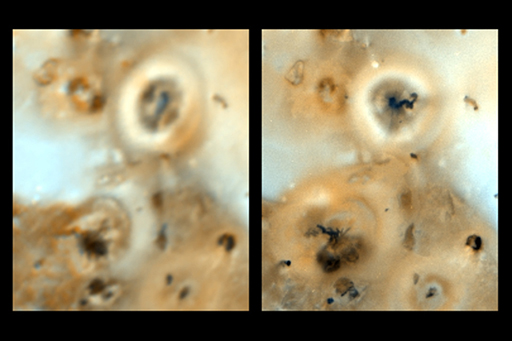1.4 A closer look at volcanism on Io
Io has hundreds of centres of volcanism on its surface, caused by the tidal heating from Jupiter creating a huge tidal bulge at the surface. Eruption temperatures have been measured up to 1400 °C. It’s likely that the material erupted would be similar in composition to an Earth basalt. The huge Tvashtar plume that you saw in the previous video was most likely composed of pyroclastic material, sulfur and sulfur dioxide. With no atmosphere to hinder the plume, it created a huge umbrella as gravity pulled the material back to the surface. Many of the volatiles erupted escape into space, however, and are thought to land on other nearby moons such as Europa. The lack of impact craters on Io’s surface demonstrates the young age of the surface as new craters are quickly flooded by lava or buried by fall-out from plumes.
In Figure 11 the 200 km circular feature near the upper right is because we are looking down through a persistent eruption plume at Prometheus volcano. The Galileo image shows more detail, but many genuine changes have occurred on the surface, notably the dark lava flow that was erupted from the volcano between these two dates.

For the first new close-up views of Io in more than 20 years, see here for NASA’s Juno mission that made fly bys of Io in late 2023 and early 2024.
